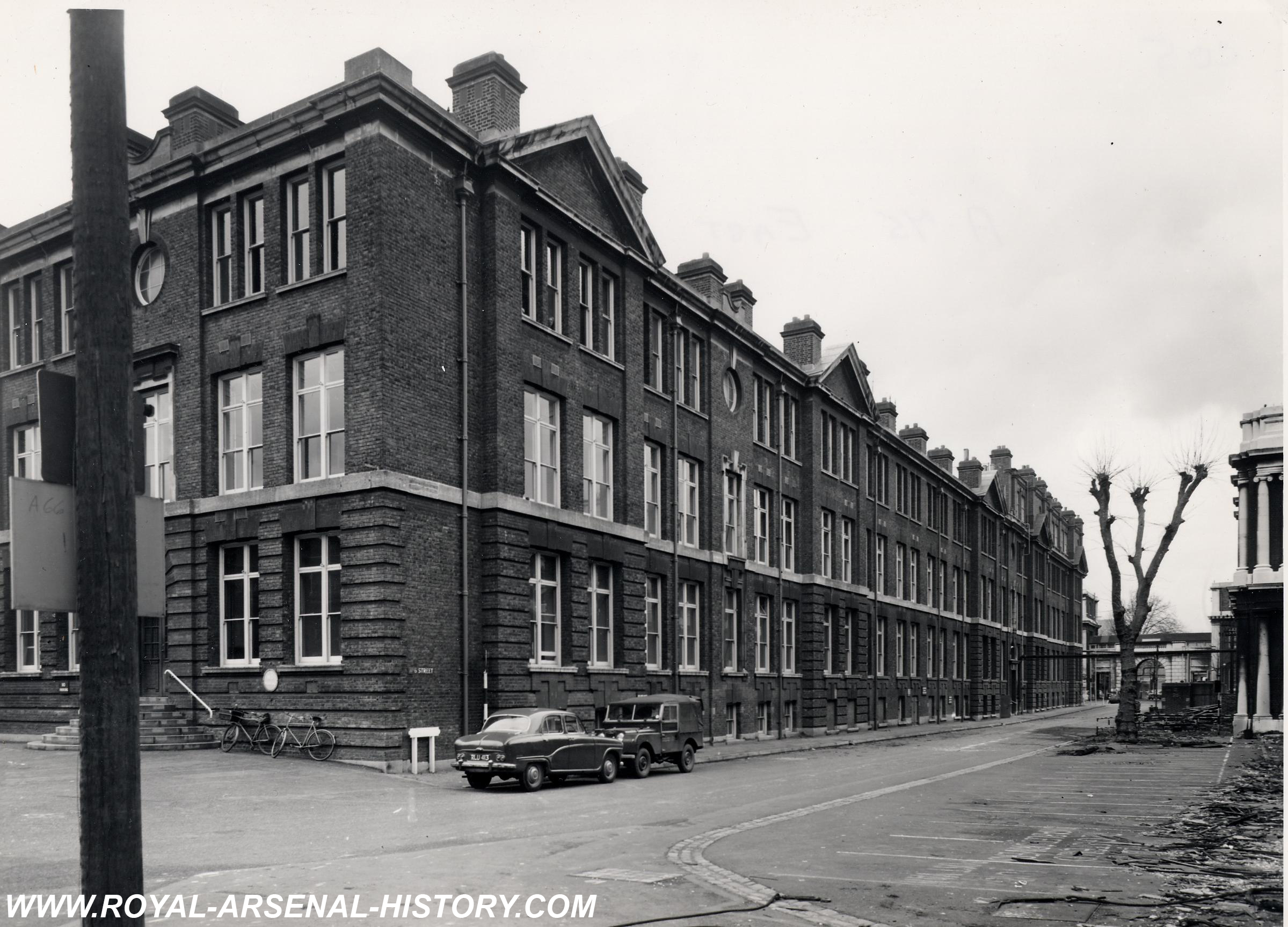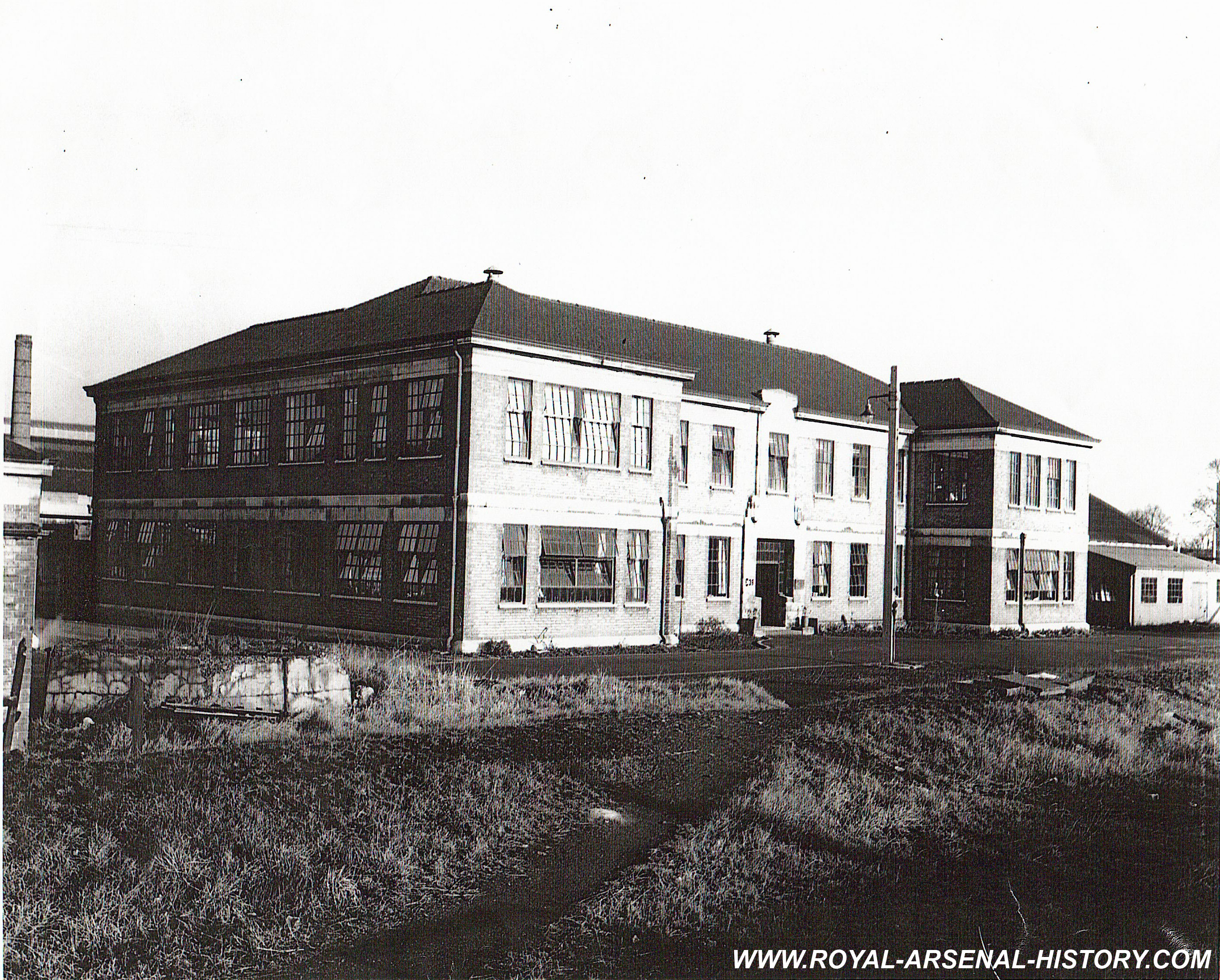Royal Arsenal Telephone Exchange Audio documentry - Jim Fay
The telephone exchange was very highly developed at a very early stage from 1896, parts of this telephone exchange still survives today.
The main Royal Arsenal telephone exchange system dates from around 1918. The exchange was located on the roof of the Central office building (A22) and had 18 switchboards.
In the basement of the cenral office, a 50 line automatic exchange which linked key services. The main exchange was manualy operated by women operators who originated from the General Post Office (GPO), the forerunner of BT. For more information play audio clip above.
The telephone exchange had a manually operated boards operated by a number of G P O trained women operators . A engineer was also in attendance. The board during the R O F period was covered 24 hrs a day, at week ends, and Bank holidays. It had eighteen switch boards for internal calls and six boards for external and direct lines to other government departments and establishments eg ( Garland road & Red Barracks ). About 14000 lines were available for internal use. A wet lead acid battery, and charging room was sited next to the exchange.This consisted of two banks of batteries one on charge and one in use the specific gravity and level of the acid were constantly checked. There was also a motor driven alternator for the ringing system in operation. Bells were rang from the exchange at comencement and conclusion of tea breaks and at start and end of shifts in production shops There was also a 50 line automatic exchange serving, phones only in power station and sub stations and compressor houses. This was in the basement of the Central Office Jim Fay has produced a audio tape of the section Jim Fay was a telephone engineer who served his apprenticeship in the Arsenal. The Telephone workshop and staff were based at building D1 on the river front. The section consisted of cable jointers over head linesmen and internal wire-men. Staff worked in some very bad conditions, rain snow etc. There are three Coffins so called because of their shape two on the wall at the side of the second Arsenal gate and one in the R C D ( building C2 or building 10 ) have a good example of the type of cable lead with tissue paper wound round the copper wire as a insulator One of these should at least be retained Clocks in the Central office, Beresford gate, second and third gates were of the impulse type. The maker was Gent. The Master clock, was in the Messengers office at the main entrance of the Central office, and the slave clocks were on the wall outside the telephone exchange entrance. In the corridor separating the Drawing office and Telephone Exchange, there were six slave clocks in one to each of the floors of the Central Office and to the gates. The clocks were in series. If a clock had to be removed there was a shorting out connection provided behind each clock. The battery, battery charger and variable resistances for each slave clock were in the exchange. each clock required a D C voltage of aprox 1½ . At the main gate, there was a clock on each side of the entrance and one over the entrance facing the Beresford square. The voltage at the Central Office was 22 volts dc and at the clock was approx. 2 volts. a considerable voltage drop. This supply was sent by telephone cables To correct the time of an individual clock a 1½volt torch battery was used If the one facing the square was not correct phone calls were received from the market stall holders The west side of the Main gate exit, there was a room were the incoming outside GPO lines to the telephone exchange were installed, from which our engineers took over responsibility. All calls on the system had to go through the operators After the closure of the R O F The new automatic exchange was installed in bld 21 this was operated by G P O (B T ). The exchange was very noisy with the movement of the relays on the racks dialling the numbers. There were three types of phones one was internal use only, the second you could dial 9 this gave a outside line enabling you to dial a number in the local area. the third one was world wide these were only in certain offices . As soon as there was a Power failure panic phoning to find out the trouble resulting in over loading . The ammeter reading charging the batteries during peak hours was in the region of 80 amps load As B T had no emergency generator Site Management had to transport their generator in emergency to connect up. A box was installed out side connecting to a change over switch in the charging room plus a supply to the ringing transformer
The main Royal Arsenal telephone exchange system dates from around 1918. The exchange was located on the roof of the Central office building (A22) and had 18 switchboards.
In the basement of the cenral office, a 50 line automatic exchange which linked key services. The main exchange was manualy operated by women operators who originated from the General Post Office (GPO), the forerunner of BT. For more information play audio clip above.
The telephone exchange had a manually operated boards operated by a number of G P O trained women operators . A engineer was also in attendance. The board during the R O F period was covered 24 hrs a day, at week ends, and Bank holidays. It had eighteen switch boards for internal calls and six boards for external and direct lines to other government departments and establishments eg ( Garland road & Red Barracks ). About 14000 lines were available for internal use. A wet lead acid battery, and charging room was sited next to the exchange.This consisted of two banks of batteries one on charge and one in use the specific gravity and level of the acid were constantly checked. There was also a motor driven alternator for the ringing system in operation. Bells were rang from the exchange at comencement and conclusion of tea breaks and at start and end of shifts in production shops There was also a 50 line automatic exchange serving, phones only in power station and sub stations and compressor houses. This was in the basement of the Central Office Jim Fay has produced a audio tape of the section Jim Fay was a telephone engineer who served his apprenticeship in the Arsenal. The Telephone workshop and staff were based at building D1 on the river front. The section consisted of cable jointers over head linesmen and internal wire-men. Staff worked in some very bad conditions, rain snow etc. There are three Coffins so called because of their shape two on the wall at the side of the second Arsenal gate and one in the R C D ( building C2 or building 10 ) have a good example of the type of cable lead with tissue paper wound round the copper wire as a insulator One of these should at least be retained Clocks in the Central office, Beresford gate, second and third gates were of the impulse type. The maker was Gent. The Master clock, was in the Messengers office at the main entrance of the Central office, and the slave clocks were on the wall outside the telephone exchange entrance. In the corridor separating the Drawing office and Telephone Exchange, there were six slave clocks in one to each of the floors of the Central Office and to the gates. The clocks were in series. If a clock had to be removed there was a shorting out connection provided behind each clock. The battery, battery charger and variable resistances for each slave clock were in the exchange. each clock required a D C voltage of aprox 1½ . At the main gate, there was a clock on each side of the entrance and one over the entrance facing the Beresford square. The voltage at the Central Office was 22 volts dc and at the clock was approx. 2 volts. a considerable voltage drop. This supply was sent by telephone cables To correct the time of an individual clock a 1½volt torch battery was used If the one facing the square was not correct phone calls were received from the market stall holders The west side of the Main gate exit, there was a room were the incoming outside GPO lines to the telephone exchange were installed, from which our engineers took over responsibility. All calls on the system had to go through the operators After the closure of the R O F The new automatic exchange was installed in bld 21 this was operated by G P O (B T ). The exchange was very noisy with the movement of the relays on the racks dialling the numbers. There were three types of phones one was internal use only, the second you could dial 9 this gave a outside line enabling you to dial a number in the local area. the third one was world wide these were only in certain offices . As soon as there was a Power failure panic phoning to find out the trouble resulting in over loading . The ammeter reading charging the batteries during peak hours was in the region of 80 amps load As B T had no emergency generator Site Management had to transport their generator in emergency to connect up. A box was installed out side connecting to a change over switch in the charging room plus a supply to the ringing transformer
Central Office
Frog Island


